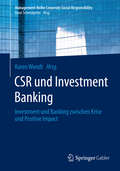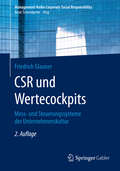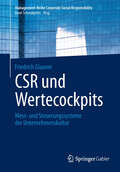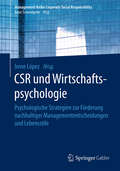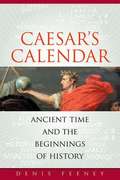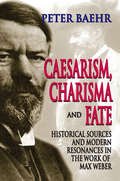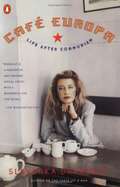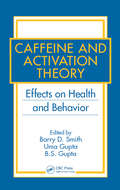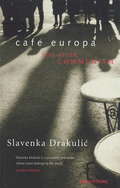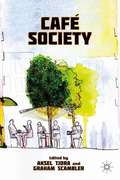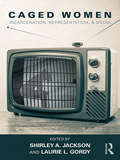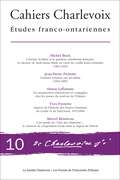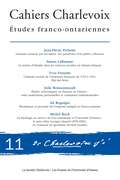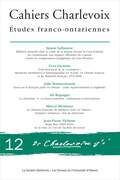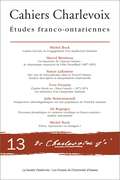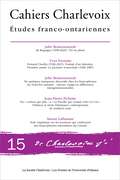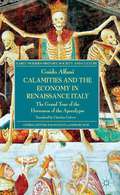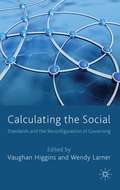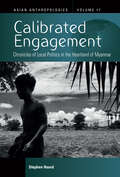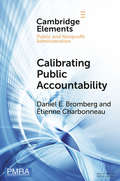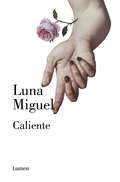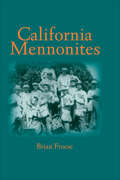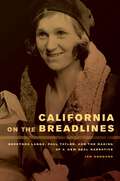- Table View
- List View
CSR und Investment Banking: Investment und Banking zwischen Krise und Positive Impact (Management-Reihe Corporate Social Responsibility)
by Karen WendtDie Finanzindustrie ist Spiegel der Gesellschaft und ihr Businessmodell befindet sich nicht erst seit der Finanzkrise am Scheideweg. Wenn die Negativspirale aus Klimawandel, rasantem Bevölkerungswachstum, ungehemmter Urbanisierung und zunehmend sozialen Spannungen abgewendet werden soll, sind ganzheitliche Management-Ansätze zwingend. Immer mehr Vorstände und Experten der deutschen Finanzindustrie zeigen - nachhaltiges Investment und nachhaltiges Bankgeschäft ist machbar. Vordenker aus Wirtschaft, Wissenschaft und Gesellschaft stellen die integrierte Betrachtung finanzieller, gesellschaftlicher und Umweltleistung in den Mittelpunkt der Geschäftsstrategie und zeigen, dass Integration von Nachhaltigkeit in die Wertschöpfungskette funktioniert. Das klassische Dreieck aus Profit, Risiko und Liquidität wird um eine vierte Komponente ergänzt, die gesellschaftliche Wirkkraft der Geldverwendung.
CSR und Wertecockpits: Mess- und Steuerungssysteme der Unternehmenskultur (Management-Reihe Corporate Social Responsibility #299)
by Friedrich GlaunerUnternehmenswerte sichern den Unternehmenserfolg. Das Wertecockpit steuert sie transparent und nachhaltig ertragssteigernd. Unternehmenswerte beeinflussen messbar den wirtschaftlichen Erfolg herausragender Unternehmen. Das Instrument des Wertecockpits gestaltet die Werte transparent. Es verknüpft betriebswirtschaftliche Ansätze zur Steuerung von Unternehmensprozessen mit interdisziplinären Forschungsergebnissen zu den Treiberkräften menschlichen Denkens und Handelns. Das Buch erläutert, wie und warum die Unternehmenskultur, individuell und nach klaren Regeln operativ gelenkt, ein signifikantes Asset wirtschaftlichen Erfolgs ist. Es zeigt, dass die Steuerung der Wertekultur ein Wertschöpfungsprozess ist, der die Grundlage für alle anderen Unternehmensprozesse bildet. Mit den Instrumenten des Wertecockpits kann er in jedem Unternehmen effizient und schlank umgesetzt werden. In der Darstellung namhafter Unternehmen und Interviews mit ihren CEOs und Gründern wird die Frage beantwortet, auf welche Weise weiche Unternehmensfaktoren einen messbaren Beitrag zur dauerhaften Leistungsfähigkeit von Unternehmen leisten. Das Wertecockpit erfasst mit seinen integralen Instrumenten des C4-Managements und der sieben Treiberfaktoren der Unternehmenskultur alle Bereiche der strategischen und operativen Unternehmensführung.
CSR und Wertecockpits: Mess- und Steuerungssysteme der Unternehmenskultur (Management-Reihe Corporate Social Responsibility)
by Friedrich GlaunerUnternehmenswerte sichern den Unternehmenserfolg.Das Wertecockpit steuert sie transparent und nachhaltig ertragssteigernd.Unternehmenswerte beeinflussen messbar den wirtschaftlichen Erfolg herausragender Unternehmen. Das Instrument des Wertecockpits gestaltet die Werte transparent. Es verknüpft betriebswirtschaftliche Ansätze zur Steuerung von Unternehmensprozessen mit interdisziplinären Forschungsergebnissen zu den Treiberkräften menschlichen Denkens und Handelns.Das Buch erläutert, wie und warum die Unternehmenskultur, individuell und nach klaren Regeln operativ gelenkt, ein signifikantes Asset wirtschaftlichen Erfolgs ist. Es zeigt, dass die Steuerung der Wertekultur ein Wertschöpfungsprozess ist, der die Grundlage für alle anderen Unternehmensprozesse bildet. Mit den Instrumenten des Wertecockpits kann er in jedem Unternehmen effizient und schlank umgesetzt werden.In der Darstellung namhafter Unternehmen und Interviews mit ihren CEOs und Gründern wird die Frage beantwortet, auf welche Weise weiche Unternehmensfaktoren einen messbaren Beitrag zur dauerhaften Leistungsfähigkeit von Unternehmen leisten. Das Wertecockpit erfasst mit seinen integralen Instrumenten des C4-Managements und der sieben Treiberfaktoren der Unternehmenskultur alle Bereiche der strategischen und operativen Unternehmensführung.
CSR und Wirtschaftspsychologie
by Irene LópezDieses Buch fokussiert auf die Ebenen der direkten Implementierung von Corporate Social Responsibility im Unternehmen und im Konsumverhalten. Nicht immer ist das Verständnis für CSR-Maßnahmen bei Mitarbeitern gegeben, doch gerade die Integration von nachhaltigen Strategien in das eigene Bewusstseins und damit das eigene Handeln ist erfolgsentscheidend. Dieses Herausgeberwerk präsentiert psychologische Erkenntnisse und Konzepte die in der Kommunikation mit den eigenen Mitarbeiter, aber auch mit Endverbrauchern, den Konsumenten, genutzt werden können. Spezialbeiträge von Beitragsautoren aus Wissenschaft und Praxis zeigen wie CSR und Wirtschaftspsychologe miteinander zu verknüpfen sind.
Caesar's Calendar: Ancient Time and the Beginnings of History
by Denis FeeneyDenis Feeney investigates time and its contours as described by the ancient Romans, first as Rome positioned itself in relation to Greece and then as it exerted its influence as a major world power.
Caesarism, Charisma and Fate: Historical Sources and Modern Resonances in the Work of Max Weber
by Peter Baehr"How do writers, marginalized by the authoritarian state in which they live, intervene in the political process? They cannot do so directly because they are not politicians. Other modes of engagement are possible, however. A writer may take up arms and become a revolutionary. Or, as Max Weber did, he may try to influence politics by playing the role of constitutional advisor, or by seeking to shape the dominant language in which his contemporaries think. Weber sought to reconstitute the political and social vocabulary of his day.Part I of Caesarism, Charisma and Fate examines a great writer's political passions and the linguistic creativity they generated. Specially, it is an analysis of the manner in which Weber reshaped the nineteenth century idea of ""Caesarism,"" a term traditionally associated with the authoritarian populism of Napoleon III and Bismarck, and transmuted it into a concept that was either neutral or positive. The coup de grace of this alchemy was to make Caesarism reappear as charisma. In that transformation, a highly contentious political concept, suffused with disapproval and anxiety, was naturalized into an ideal type of universal value-free sociology.Part II augments Weber's ideas for the modem age. A recurrent preoccupation of Weber's writings was human ""fate,"" a condition that evokes the pathos of choice, the political meaning of death, and the formation of national solidarity. Peter Baehr, marrying Weber and Durkheim, fashions a new concept, ""community of fate,"" for sociological theory. Communities of fate--such as the Warsaw Ghetto or Hong Kong dealing with the Severe Acute Respiratory Syndrome (SARS) crisis--are embattled social sites in which people face the prospect of collective death. They cohere because of an intense and broadly shared focus of attention on a common plight. Weber's work helps us grasp the nature of such communities, the mechanisms that produce them, and, not least, their dramatic consequences.<"
Cafe Europa: Life after Communism
by Slavenka DrakulicA collection of essays that explore life in various Eastern European countries since the fall of communism.
Caffeine and Activation Theory: Effects on Health and Behavior
by Barry D. Smith Uma Gupta B. S. GuptaThe virtually universal popularity of caffeine, together with concerns about its potential pathogenic effects, have made it one of the most extensively studied drugs in history. However, despite the massive scientific literature on this important substance, most reviews have either focused on limited areas of study or been produced in popular form
Café Europa: Life After Communism
by Slavenka DrakulicEurope is still a divided continent. In the place of a fallen Berlin wall, there is a chasm between the East and the West. Are these differences a communist legacy, or do they run even deeper? What divides us today? To say simply that it is the understanding of the past, or a different concept of time, is not enough. But a visitor to this part of the world will soon discover that we, the Eastern Europeans, live in another time zone. We live in the twentieth century, but at the same time we inhabit a past full of myths and fairy tales, of blood and national belonging, and the fact that most people are lying and cheating or that they have the habit of blaming others for every failure...'An intimate tour of life on the streets of Budapest, Tirana, Warsaw and Zagreb, as those cities continue to acclimatise to the post-Communist thaw, Café Europa does not provide easy solutions or furnish political pallatives. Rather as a Croatian with a viewpoint of ever-widening relevance, the value of Slavenka Drakulic's wry and humane observations lie in the emotional force of their honesty and the clarity of their insight.....
Café Society
by Aksel Tjora Graham ScamblerWhile tracing the historical emergence of the café as a social institution and noting its multiple faces and functions in the modernity of the occident, three themes run like threads of varying texture through the chapters: the social connectivity and inclusion of cafés, café as surrogate office, and café as site of exchange for news and views.
Caged Women: Incarceration, Representation, & Media (Sociology Re-Wired)
by Shirley A. Jackson Laurie L. GordyThe Netflix series Orange is the New Black has drawn widespread attention to many of the dysfunctions of prisons and the impact prisons have on those who live and work behind the prison gates. This anthology deepens this public awareness through scholarship on the television program and by exploring the real-world social, psychological, and legal issues female prisoners face. Each chapter references a particular connection to the Netflix series as its starting point of analysis. The book brings together scholars to consider both media representations as well as the social justice issues for female inmates alluded to in the Netflix series Orange is the New Black. The chapters address myriad issues including cultural representations of race, class, gender, and sexuality; social justice issues for transgender inmates; racial dynamics within female prisons; gender and female prison structures/policies; treatment of women in prison; re-incarcerated and previously incarcerated women; self and identity; gender, race, and sentencing; and reproduction and parenting for female inmates.
Cahiers Charlevoix 10: Études franco-ontariennes (Cahiers Charlevoix #10)
by Marcel Bénéteau M. Jean-Pierre Pichette Professeur Simon Laflamme Professeur Yves Frenette Professeur Michel BockCe dixième volume des Cahiers Charlevoix regroupe cinq études sur l’Ontario français, qui traitent du diocèse de Sault-Sainte-Marie dans le conflit franco-irlandais entre 1904 et 1934; des perspectives amoureuses et conjugales des jeunes du nord-est de l’Ontario; des aspects de l’histoire des Franco-Ontariens du Centre et du Sud-Ouest de 1970 à 2000; de l’art perdu de « faire des chansons » de la région du Détroit ainsi que des propos et confidences du jésuite ethnologue Germain Lemieux. Publié en français
Cahiers Charlevoix 11: Études franco-ontariennes (Cahiers Charlevoix #11)
by M. Jean-Pierre Pichette Professeur Simon Laflamme Professeur Yves Frenette Professeure Julie Boissonneault Professeur Ali Reguigui Professeur Michel BockJean-Pierre Pichette présente le troisième chapitre de « Germain Lemieux par lui-même », ce qui complète la série autobiographique du célèbre ethnologue (1914-2008) qui a oeuvré en Ontario français durant plus d’un demi-siècle. Tirées de la longue entrevue accordée à l’auteur en 1995, ces ultimes confidences du père Lemieux portent sur les genres de la littérature orale – conte et chanson – qu’il a privilégiés.Simon Laflamme examine la notion d’identité telle qu’elle se révèle dans les travaux des spécialistes des sciences humaines qui se sont penchés sur l’Ontario français. Après avoir mis en évidence des théories générales puis planté quelques balises historiques, il considère les travaux selon leur domaine d’analyse : l’éducation, la politique et le juridique, le genre, la famille, les médias, les arts et les sports. Au terme de cette recension, il met en lumière les deux thèses qui polarisent le discours : l’assimilation et l’hybridité.Yves Frenette propose un tour d’horizon de l’histoire sociale de la francophonie nordaméricaine, entre le départ de la France du continent, en 1763, et la Première Guerre mondiale. Divisé en deux périodes, ce long XIXe siècle « franco-américain » voit tout à la fois l’expansion et la contraction du fait français, à la mesure, d’une part, des migrations, et, d’autre part, de l’ascendance hégémonique de la langue anglaise.Julie Boissonneault pose son regard sur la fréquentation des établissements universitaires, elle se demande dans quelle langue les Franco-Ontariens font leur scolarité. Sont alors mises en jeu la langue maternelle et la langue de la scolarité à l’élémentaire et au secondaire comme vecteurs de leur motivation à étudier en français au palier supérieur.Ali Reguigui convient que s’il existe un nombre important de recherches portant sur la phonétique et la phonologie des emprunts intégrés et sur la manière dont les mots empruntés sont ajustés et reproduits selon les schèmes phonétiques de la langue receveuse, les études scrutant le traitement phonétique et prosodique de l’emprunt intégral en franco-ontarien font défaut. Il livre ici les prémices d’une enquête préliminaire sur la prosodie de l’emprunt.Michel Bock propose une analyse de la pensée politique du père oblat Georges Simard (1878- 1956), théologien et professeur à l’Université d’Ottawa pendant la première moitié du XXe siècle. Rattaché, à l’origine, à la faction nationaliste intransigeante des oblats canadiens-français, le père Simard changea son fusil d’épaule pour épouser d’abord le « bon-ententisme », puis le loyalisme, après que Rome fut intervenue pour condamner le nationalismecatholique à la fois en Ontario français, dans le contexte de la crise du Règlement 17, et en Europe.Fidèle à la pratique établie depuis le cinquième volume des Cahiers Charlevoix, ce onzième volume se termine par la « chronique » que notre confrère Marcel Bénéteau a préparée. On y trouvera rassemblés les nouvelles et les faits saillants relatifs aux activités professionnelles des membres de la Société Charlevoix et la liste des articles publiés par les membres de la Société des Dix.Publié en français
Cahiers Charlevoix 12: Études franco-ontariennes (Cahiers Charlevoix #12)
by Marcel Bénéteau M. Jean-Pierre Pichette Professeur Simon Laflamme Professeur Yves Frenette Professeure Julie Boissonneault Professeur Ali Reguigui Professeur Michel BockCoïncidant avec le vingt-cinquième anniversaire de la Société Charlevoix, la fournée 2018 de ce douzième cahier réunit six études. Simon Laflamme publie l’affidavit qui a été utilisé par le Commissariat aux langues officielles pour appuyer la cause qu’il défendait contre la Société Radio-Canada. À la suite des compressions budgétaires de 2009 dont elle avait été victime, la société d’État réduisait fortement sa programmation à la station de radio Cbef de Windsor. Yves Frenette propose un regard comparatif de l’historiographie dans trois aires de la francophonie canadienne entre 1970 et 2000. Au cours de cette période de transition, les identités traditionnelles acadienne et canadienne-française déclinent progressivement au profit de nouvelles identités francophones provincialisées. Julie Boissonneault se penche sur la perception qu’on a de la langue des Franco-Ontariens. La langue française parlée en Ontario fait souvent l’objet d’un discours dépréciatif qui établit la compétence des Franco-Ontariens à l’aune de leurs manquements au français de référence. Or, ce discours, qui ne tient pas compte de l’enjeu de la variation interne de toute langue et des processus naturels d’évolution des parlers, nourrit des représentations à l’égard du parler qui sont souvent partielles ou fausses et qui, en retour, peuvent mener à un sentiment d’incompétence chez le locuteur franco-ontarien. Ali Reguigui inscrit son étude dans le cadre de la phonétique articulatoire et de la sociophonétique, fondée sur les données d’un questionnaire sociolinguistique recueillies auprès de sujets franco-ontariens. Il examine le cas de la consonne roulée alvéolaire voisée /r/ du latin, qui a persévéré en ancien français et moyen français jusqu’au xviie siècle dans les centres urbains, et jusqu’au XVIIIe siècle en général pour se faire remplacer par la consonne roulée uvulaire voisée, communément qualifiée de grasseyée et marquée comme variante de prestige Marcel Bénéteau fait le bilan de la chanson traditionnelle française en Ontario et trace son évolution dans le temps et l’espace. L’auteur décrit le travail qu’il a entrepris pour déterminer en premier lieu en quoi consiste le répertoire de l’Ontario français ; à cette fin, il précise quelles sont ses balises historiques et géographiques (où et quand le répertoire s’est-il implanté sur le territoire ?) et ce qu’il comprend au juste (combien de chansons ? quelles chansons ? quelles catégories de chansons ?). Jean-Pierre Pichette verse un nouveau chapitre au dossier de la transposition des récits oraux dans des oeuvres littéraires. À l’analyse des écrits destinés à la jeunesse de l’écrivaine Marie-Rose Turcot (Cahiers Charlevoix 3) et de l’ethnologue Marius Barbeau (Cahiers Charlevoix 4), il ajoute l’examen des « petits contes drolatiques » qu’un autre écrivain d’Ottawa, Régis Roy (1864-1944), a publiés entre 1906 et 1928. Michel Bock a compilé dans la « Chronique » les faits saillants survenus depuis la parution du dernier volume et les nouvelles des membres reliées à leurs activités professionnelles. Nous y joignons le compte rendu des activités récentes de la Société des Dix que son secrétaire, Fernand Harvey, a préparé à notre intention. Publié en français
Cahiers Charlevoix 13: Études franco-ontariennes (Cahiers Charlevoix #13)
by Marcel Bénéteau M. Jean-Pierre Pichette Professeur Simon Laflamme Professeur Yves Frenette Professeure Julie Boissonneault Professeur Ali Reguigui Professeur Michel BockFondée à Sudbury en 1992, la Société Charlevoix est un regroupement d’universitaires qui se consacrent à des travaux savants sur l’Ontario français. Par son nom, la Société honore la mémoire du jésuite Pierre-François-Xavier de Charlevoix (1682-1761), qui a laissé des observations remarquables sur le territoire ontarien. Limités en tout temps à dix en nombre, ses membres examinent les réalités franco-ontariennes selon les perspectives variées qu’apportent leurs disciplines. Leur élection se fait par cooptation, à l’unanimité des voix. Depuis 1995, la Société Charlevoix publie les Cahiers Charlevoix. Études franco-ontariennes, un collectif exclusivement dévolu à la diffusion des travaux de ses membres.Depuis leur création, nos Cahiers Charlevoix n’ont jamais comporté plus de six essais. La présente livraison, la treizième de la série, en compte sept : précédant les six études courantes de 2020, l’hommage rendu à un membre émérite disparu, Gaétan Gervais, commandait cette première.Publiée sous le patronage de la Société Charlevoix, l’édition de ce treizième Cahier Charlevoix est le fruit d’une entente entre la Société Charlevoix et les Presses de l’Université d’Ottawa.
Cahiers Charlevoix 15: Études franco-ontariennes
by M. Jean-Pierre Pichette Professeur Simon Laflamme Professeur Yves Frenette Professeure Julie BoissonneaultFondée à Sudbury en 1992, la Société Charlevoix est un regroupement d’universitaires qui se consacrent à des travaux savants sur l’Ontario français. Par son nom, la Société honore la mémoire du jésuite Pierre-François-Xavier de Charlevoix (1682-1761), qui a laissé des observations remarquables sur le territoire ontarien. Limités en tout temps à dix en nombre, ses membres examinent les réalités franco-ontariennes selon les perspectives variées qu’apportent leurs disciplines. Leur élection se fait par cooptation, à l’unanimité des voix. Depuis 1995, la Société Charlevoix publie les Cahiers Charlevoix. Études franco-ontariennes, un collectif exclusivement dévolu à la diffusion des travaux de ses membres.Le numéro 15 comprend des articles de :Yves Frenette, Julie Boissonneault, Jean-Pierre Pichette, Simon Laflamme.
Cairo: The City Victorious
by Max RodenbeckFrom a noted journalist who has spent much of his life in Cairo, here is a dazzling cultural excavation of that most ancient, colorful, and multifaceted of cities. The seat of pharaohs and sultans, the prize of conquerors from Alexander to Saladin to Napoleon, Cairo--nicknamed "the Victorious"--has never ceased reinventing herself.With intimate knowlege, humor, and affection, Rodenbeck takes us on an insider's tour of the magnificent city: its backstreets and bazaars, its belly-dance theaters and hashish dens, its crowded slums and fashionable salons, its incomparably rich past and its challenging future. Cairo: The City Victorious is a unique blend of travel and history, an epic, resonant work that brings one of the world's great metropolises to life in all its dusty, chaotic beauty.
Calamities and the Economy in Renaissance Italy
by Guido AlfaniItaly faced a number of catastrophes in the long sixteenth century. This economic and demographic history follows the consequences of these catastrophes - the action of the Horsemen of the Apocalypse - War, Famine and Plague, all followed by Death.
Calculating the Social
by Vaughan Higgins Wendy LarnerExamining the increasingly powerful role of standards in the governing of economic, political and social life, this book draws upon governmentality and actor network theory to explore how standards and standardizing projects are articulated and rendered workable in practice, and the objects, subjects and forms of identity to which this gives rise.
Calibrated Engagement: Chronicles of Local Politics in the Heartland of Myanmar (Asian Anthropologies #17)
by Stéphen HuardFor decades, the heartland of Myanmar has been configured as a pacified space under military surveillance. A closer look reveals how politics is enacted at distance with the state. Calibrated Engagement weaves together ethnography and history to chronicle the transformation of rural politics in Anya, the dry lands of central Myanmar. The book presents situations as varied as local elections, inheritance transmissions, land conflicts and ceremonies, to show that politics is about how people calibrate the way they engage with each other.
Calibrating Public Accountability: The Fragile Relationship between Police Departments and Civilians in an Age of Video Surveillance (Elements in Public and Nonprofit Administration)
by Étienne Charbonneau Daniel E. BrombergAccountability is a staple of Public Administration scholarship, but scholars have been unsuccessful at developing a predictive model of accountable behavior. Large swaths of research about accountability still focuses on scarcely read annual reports as video footage of police encounters are watched and discussed by citizens regularly. In this Element, we seek to further a predictive model of accountability by understanding the norms and expectations associated with the implementation of Body-Worn Cameras. Specifically, this research examines when police departments release, or do not release, footage to the public and the expectations civilians have about the release of that footage. Indirectly, the norms and expectations associated with this technology have broad implications for societal values and the relationship between civilians and law enforcement. Our findings suggest the relationship between law enforcement and civilians is central to the implementation of this policy, and more broadly, accountability.
Caliente
by Luna MiguelUna historia personal de amor y placer «Pues me he leído este libro casi del tirón, a pesar de que mi cishomosexualidad no me convertía en target predilecto. Me ha encantado la frialdad distante de la autora. He aprendido mucho. Y he sacado un par de conclusiones importantes que no voy a desvelar aquí.»Luisge Martín Luna Miguel brinda en Caliente su narración más íntima sobre el deseo, el amor plural y la creación literaria; iluminadoras entrevistas en torno al placer y el autoplacer, y una lúcida lectura de una larga estirpe de escritoras que lo arriesgaron todo en su literatura, como Louise Glück, Cristina Morales, Annie Ernaux, Marina Tsvietáieva, H. D., Renée Vivien o Chris Kraus.Con «inteligencia y provocación» (Zenda), la autora «se impone “decir con rabia todo lo que no debo”» (El Cultural de El Mundo), y así, por medio de confesiones, reflexiones y citas, sin respiro, audaz y reveladora, vuelve a tocarnos con su mejor obra hasta la fecha. La crítica ha dicho...«Se lee del tirón y con enganche, y se aprenden y recuerdan muchas cosas sobre los terrores e inseguridades de las chicas de nuestro tiempo. Que no es poco.»Víctor Lenore, Vozpópuli «Con la disciplina de una relación estable y el fogonazo del lío de una noche, Luna organiza la biblioteca perfecta del ardor; pléyade, red, "sistema solar" para hacer colisionar nuestros tibios cuerpos celestes. Escritura y lectura del aprendizaje de la transgresión. Un libro como una bola de fuego.»Gabriela Wiener «Luna Miguel abre el melón sobre el deseo femenino y el poliamor.»Ariana Basciani, The Objective «No conocemos la forma de defendernos para que no nos rompan el corazón. Pero en Caliente sabemos qué hacer: masturbación, lecturas y amantes.»Luciana Peker «Sobre el deseo y el placer. Luna es increíble, me flipa todo lo que escribe.»Amarna Miller «Un libro arrebatador que comienza con el "corazón roto" y termina ofreciendo un destello de felicidad. Desde la masturbación a la escritura feminista, de Balthus a Kristeva, más allá de la vergüenza, hacia la multiplicidad del amor.»Fernando Castro Flórez «A veces un libro nos recuerda de lo que la literatura es capaz, de lo exigente que puede ser su examen, y lo oportuno de sus consuelos. Caliente es magia blanca, y estoy muy orgulloso y agradecido de que Luna Miguel lo haya escrito.»Gonzalo Torné «Luna Miguel utiliza la escritura biográfica como una trampilla para colarse en las entrañas literarias del deseo sexual, para estudiar su gramática e imaginar nuevas formas de relacionarnos con él.»Eudald Espluga «Un sexo en forma de ensayo.»Vanessa Graell, El Mundo «Leo a Luna y se me despierta el placer.»Margot Rot «Un ensayo que trata el deseo femenino de forma elaborada, delicada, lujuriosa y apabullante. Algo que yo, hasta ahora, no había leído antes. [...] He disfrutado inmensamente, [...] os [lo] recomiendo absolutamente a todas. Estoy segura de que de él extraeréis mucha información, pero sobre todo, hallaréis en él el amor propio, que nos ha sido robado, por vuestro deseo, vuestro cuerpo, y vuestras vulvas.»@lectoralila «Una de las voces más auténticas y comprometidas de su generación. Llena de imágenes potentes, humor y agudas reflexiones.»Laura Ferrero, ABC «Luna Miguel es una buscadora de historias, de personajes de ficción, de mujeres ficcionadas, de mujeres que ficcionan.»Rocío Niebla, Pikara Magazine «Una voz necesaria para la literatura.»Paloma Abad, Vogue «Luna Miguel despliega toda su vertiente lírica para narrar con criterio, pero dejando que las aguas de la poesía penetren con fuerza en las play
California Mennonites (Young Center Books in Anabaptist and Pietist Studies)
by Brian FroeseHow did California Mennonites confront the challenges and promises of modernity?Books about Mennonites have centered primarily on the East Coast and the Midwest, where the majority of Mennonite communities in the United States are located. But these narratives neglect the unique history of the multitude of Mennonites living on the West Coast. In California Mennonites, Brian Froese relies on archival church records to examine the Mennonite experience in the Golden State, from the nineteenth-century migrants who came in search of sunshine and fertile soil to the traditionally agrarian community that struggled with issues of urbanization, race, gender, education, and labor in the twentieth century to the evangelically oriented, partially assimilated Mennonites of today.Froese places Mennonite experiences against a backdrop of major historical events, including World War II and Vietnam, and social issues, from labor disputes to the evolution of mental health care. California Mennonites include people who embrace a range of ideologies: many are historically rooted in the sixteenth-century Reformation ideals of the early Anabaptists (pacifism, congregationalism, discipleship); some embrace twentieth-century American evangelicalism (missions, Billy Graham); and others are committed to a type of social justice that involves forging practical ties to secular government programs while maintaining a quiet connection to religion. Through their experiences of religious diversity, changing demographics, and war, California Mennonites have wrestled with complicated questions of what it means to be American, Mennonite, and modern. This book—the first of its kind—will appeal to historians and religious studies scholars alike.
California on the Breadlines: Dorothea Lange, Paul Taylor, and the Making of a New Deal Narrative
by Jan GoggansCalifornia on the Breadlines is the compelling account of how Dorothea Lange, the Great Depression’s most famous photographer, and Paul Taylor, her labor economist husband, forged a relationship that was private—they both divorced spouses to be together—collaborative, and richly productive. Lange and Taylor poured their considerable energies into the decade-long project of documenting the plight of California’s dispossessed, which in 1939 culminated in the publication of their landmark book, American Exodus: A Record of Human Erosion. Jan Goggans blends biography, literature, and history to retrace the paths that brought Lange and Taylor together. She shows how American Exodus set forth a new way of understanding those in crisis during the economic disaster in California and ultimately informed the way we think about the Great Depression itself.
Californians
by James D. HoustonJames D Houston travels down the coast of California and records his experiences for others.
